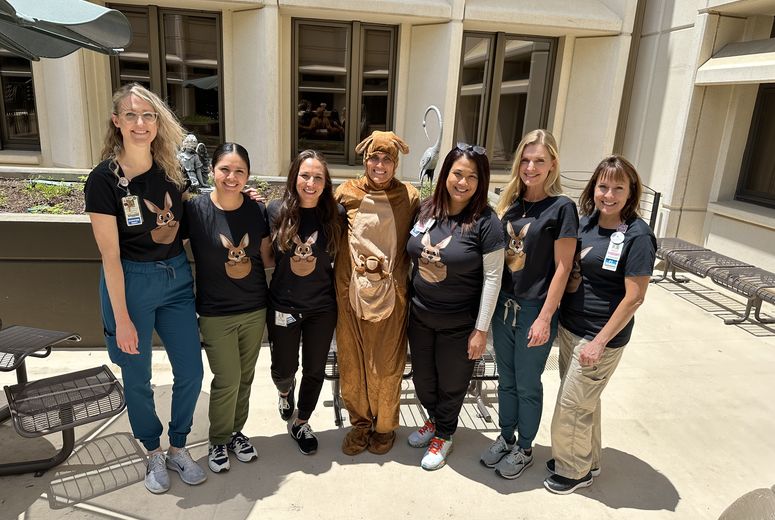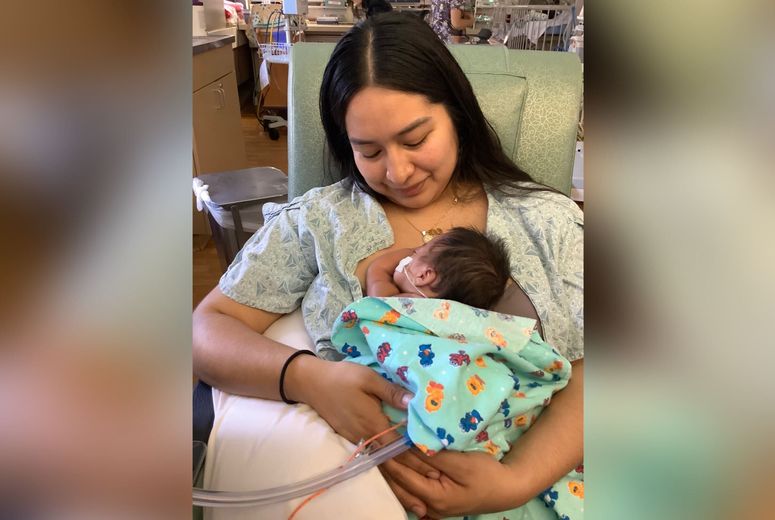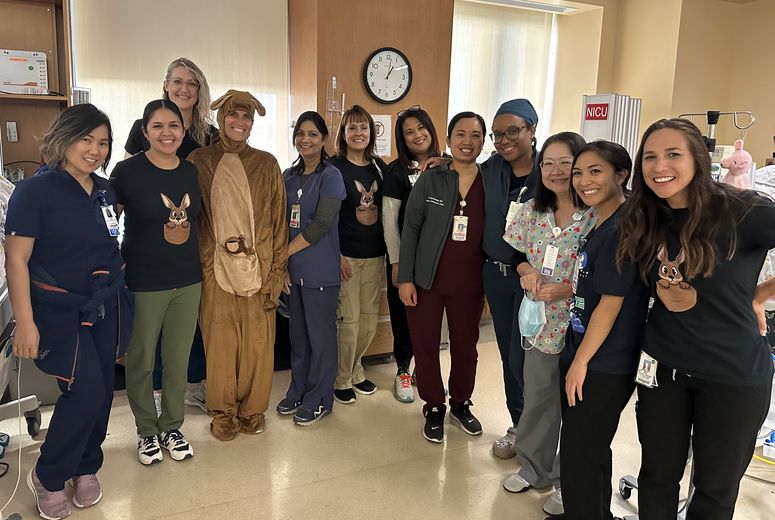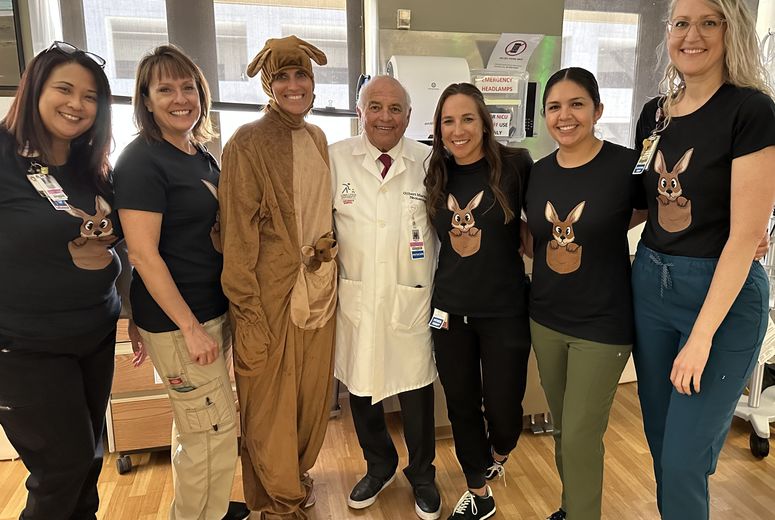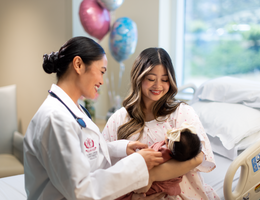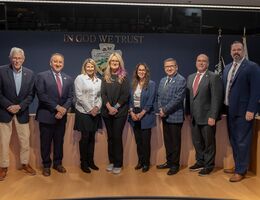

Loma Linda University Health’s neonatal intensive care unit (NICU) participated in Kangaroo-a-thon, a worldwide challenge to promote Kangaroo Care and log the hours of this technique being used within a one-week period. The method, also known as skin-to-skin contact, is the practice of placing a newborn on the bare chest of the baby’s parent. Kangaroo Care is a vital aspect of neonatal care, fostering a strong bond between parents and their babies while offering numerous benefits for the little ones.
“We use that as an opportunity to remind our staff and educate parents of all the benefits of doing kangaroo care,” said Stacey Belliard, a pediatric and neonatal physical therapist at LLU Children’s Hospital. “We create all kinds of incentives and prizes for both staff and parents and do a lot of education and encouraging kangaroo care so that we can improve our rates here in our NICU.”
This year, LLUH’s NICU completed a total of 275 hours of skin-to-skin snuggling, triple the hours compared to 2022.
Kangaroo Care has a profound impact on the health and development of newborn infants.
Enhanced Bonding: The physical contact and closeness help establish a deep emotional connection between parents and their babies, fostering a sense of security and attachment.
Temperature Regulation: The parent's body temperature adjusts to the baby's needs, aiding in maintaining a stable body temperature, especially crucial for premature infants.
Improved Respiratory Function: Kangaroo Care has been shown to regulate breathing patterns and enhance lung function in premature babies.
Enhanced Breastfeeding: Skin-to-skin contact encourages successful breastfeeding by stimulating milk production.
Growth and Development: Babies who receive Kangaroo Care often exhibit faster weight gain, improved sleep patterns, reduced stress, and better overall development.
The practice of skin-to-skin also benefits the baby’s parents.
“Moms are less likely to have postpartum depression, stress, and anxiety. It helps with the attachment and bonding between parent and their premature newborn which is a big goal of ours because it can be very challenging for a parent to bond with their baby when they've got all kinds of lines and tubes and they're so tiny. Sometimes in the NICU, parents feel like a spectator watching all these other people take care of their baby, so this is one thing that they can do, and only they can do,” said Belliard.
Rasheeda Senger and her husband have been coming to the NICU at Loma Linda University Health every day to visit their 37-week-old daughter and recounts the first time she tried the skin-to-skin technique.
“That was the best experience, and you just feel so close with your baby,” said Senger. “It was just amazing. I love feeling her little toes on my stomach. It definitely is an intimate bonding moment and we both feel connected. It’s a boost of a lot of good hormones. My heart rate slows down, and I feel like she helps me be calm and just be present.”
The origins of Kangaroo Care can be traced back to the late 1970s in Bogotá, Colombia. At that time, the country was grappling with a shortage of incubators in their hospitals, particularly in NICUs. Drawing inspiration from observing kangaroos carrying their young in their pouches, doctors developed a revolutionary concept: placing premature or low-birth-weight infants directly on their mother's or father's bare chest. The infant is nestled against their parent's skin, creating an environment that mimics the womb and provides warmth and comfort.
“I didn't get to have that special bond like a regular birth where as soon as you have them, you're able to hold them,” said Brenda Lopez, a mom in the NICU. “So, the first time I held him, it was scary for me because he was a 26-week micro preemie. He only weighed two pounds, four ounces. But it felt really good to hold him for the first time.”
For more information on how to integrate Kangaroo Care, seek guidance from your healthcare providers and nursing professionals.

